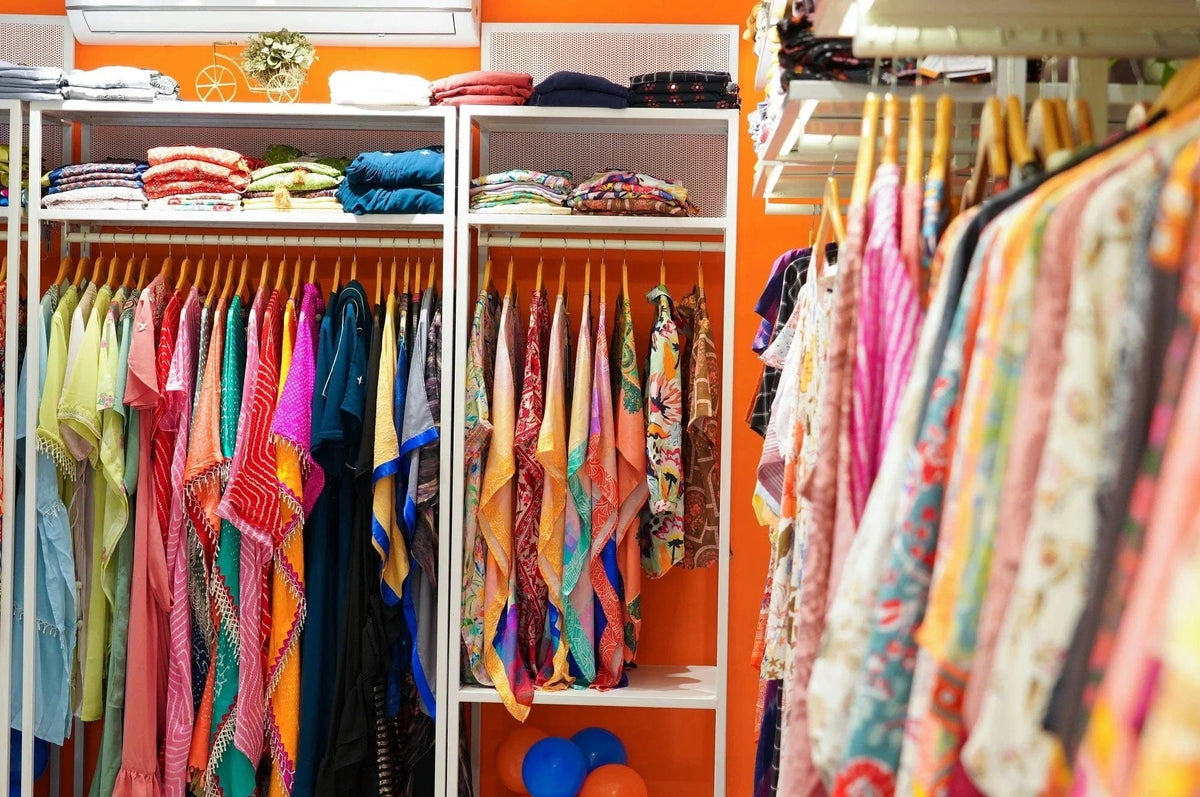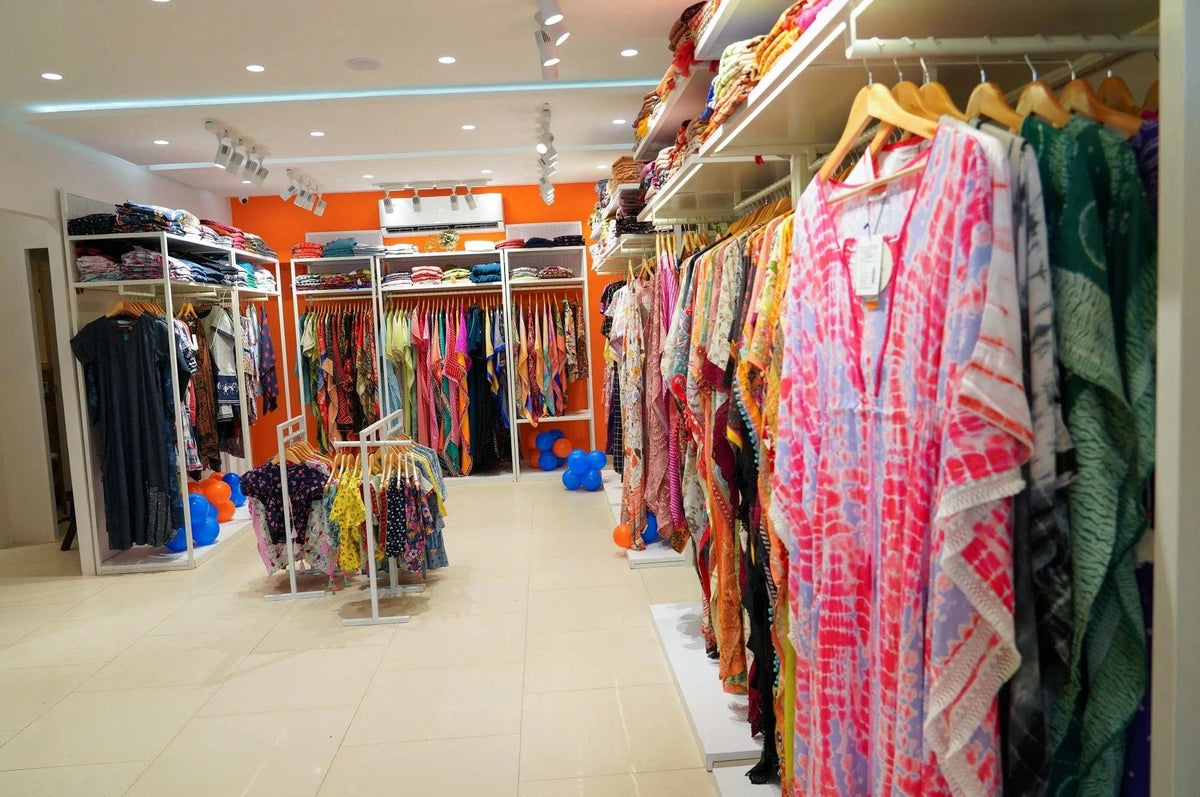Why Kaftans? What innovations have you made in kaftan designs and silhouettes?
Kaftans are a timeless, versatile garment. Worn by royalty in the past, it has been recognised by celebrities alike over the years for its comfort, elegance and stylish attributes. While the market has seen its fair share of players producing western and ethnic wear, we chose to re-introduce the niche of kaftans back into the market as we admired these attributes, too. After some research, we realised that fashion brands may carry one or two kaftans in their range (if at all), however no one was dedicated to using kaftans as their main differentiator - an opportunity we wished to capitalise on. Before launching The Kaftan Company, we had experience in the world of digital printing on fabric used in home furnishing. We utilised this in making very intricate and unique prints that are used in the making of our kaftans, like creating a piece of art from a clean sheet of canvas. The limitless variation and colour options available gave us some fantastic designs that are symbolic and recognisable as our brand. In terms of silhouettes, we have expanded our product line-up since our inception five years ago. We have since used our innovation to create maternity wear kaftans (with nursing options), kid girl kaftans, kaftan kurtis, kaftan pyjama sets and soon down the pipe-line intend to launch a menswear collection of loungewear, too. Take us through the inception of the company-finding the right vendors, setting up manufacturing units, creating a business model, managing investments, planning marketing strategies, etc. We were a bulk manufacturer of garments for nearly five years prior to launching - The Kaftan Company. This enabled us to understand what it takes to run a manufacturing
unit as well as having already existing vendors for the sourcing of ready fabrics and for our in-house creations and digital printing needs. We had also done a bit of testing while e-commerce channel partners such as Jabong and Myntra were launched with a western wear brand called Shibori Designs. This allowed us to then identify a B2C model that was strictly digital to begin with as we had operational experience in terms of manufacturing as well as operating an e-commerce brand. In terms of investment, once we identified kaftans as our product niche, we utilised earnings from the bulk manufacturing in helping start up the brand. Marketing was with the help of an agency to identify the right target market via tools like Facebook, Google and Social Media platforms such as Instagram.
How did you start the business from the ground up? What kind of investments were made and how has the returns been?
Despite having experience in the apparel field by the time we launched the brand, the first two years were a steep learning
curve. Given the niche category we intended to bring to the market, we spent a lot of time and effort in educating the customer on what a kaftan is. Many mistook it for simply being nighty, which is not the case. We had to explain the possible varieties of kaftans available, its international appeal and its versatility as a garment. As we had the machinery, labour and general sense of operations in place from our past experience of bulk manufacturing, most of our investment was utilised in R&D and creating the best and widest range of kaftans available in the country. Creating a digital presence that is liked not only nationally, but internationally as well (where we get many clients even today) was a task. It took us a little over two years to break-even and ever since we have experienced significant growth as we continue this journey.
What is the journey of a garment at Kaftan company like? How does it go from the design board to the customer's shopping bag?
Kaftans are created in-house keeping in mind the current calendar year trends, seasonality and colours. Additionally, any potential category expansion is also researched to see its market opportunity. Once a general sense of direction is achieved, our designers begin planning styles - and unlike a traditional seasonal fashion calendar, styles are launched virtually each month and are updated digitally in a timely manner. Once designs and samples are approved and locked in place for each category, fabric mapping from sample fabrics is chosen and accordingly fabric and trims are sourced based on the production requirement. In tandem, during the sourcing of material, the samples are sent for a photoshoot to ensure they meet the e-commerce guidelines needed by us and set by our channel partners. Production begins once the material is in-house and once complete stays in our inventory. Alternatively there are certain styles that cannot be produced in bulk and as a result are made by order. Once a customer places and confirms an order online, if the style is on order, it is then loaded in our production line for completion and dispatch or the style is already in inventory
in which case it goes through our dispatch process and ships out to the customer.
What are your marketing strategies? Which ones involve making the kaftan a popular choice of garment?
Being a digital only brand, a lot of our marketing revolves around social media marketing and digital marketing. Budgeting for ads and executing targeted campaigns as well as sharing new information via social media apps such as Instagram is critical for improving the popularity of our brand. We utilise influencers wherever possible to help increase awareness of kaftans and it has helped that celebrities also support kaftans as a preferred garment choice for loungewear, a category we pride ourselves on being leaders of.
How focussed are you on social media?
Presently we utilise Instagram, Facebook and the help of influencers on occasion when possible. Information on the brand is shared frequently and we are looking to expand our presence via other mediums such as Linkedin and YouTube.
Our key cities for sales in India are New Delhi, Mumbai and Bangalore. Our customers range from 35 to 55 year of age, typically with a higher affluence in terms of education and spending capacity.
Are you satisfied with the online business format? Are there any plans for a brick and mortar store?
We are a digital only brand presently and have been satisfied with the online business format. Particularly when the pandemic struck, and everything was in complete lockdown, we will still able to manage as an e-commerce brand. As part of our present growth strategy, brick and mortar is in consideration in the near future.
What are your plans for the next five years?
Plans for the brand over the next five years is to continue our current rate of growth and increase our online presence. This means The Kaftan Company becoming a house-hold brand for loungewear within the country. We will look at adding brick and mortar stores as well as a part of our national presence..
Publication : Magazine | OUS360.COM
Source link: https://ous360.com/projects/cmai/April/?utm_medium=Magazine&utm_campaign=CMAI+Apparel+April+2022#p=80





